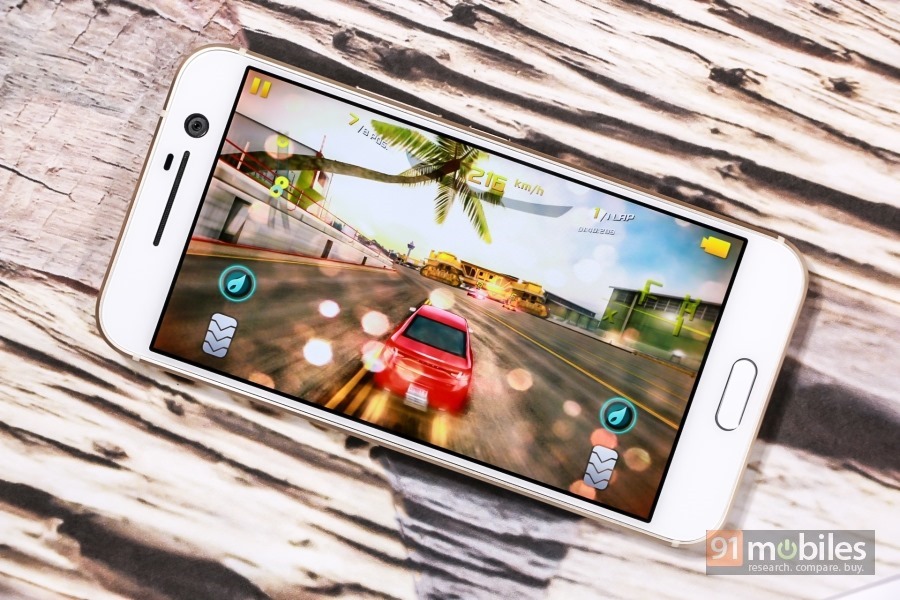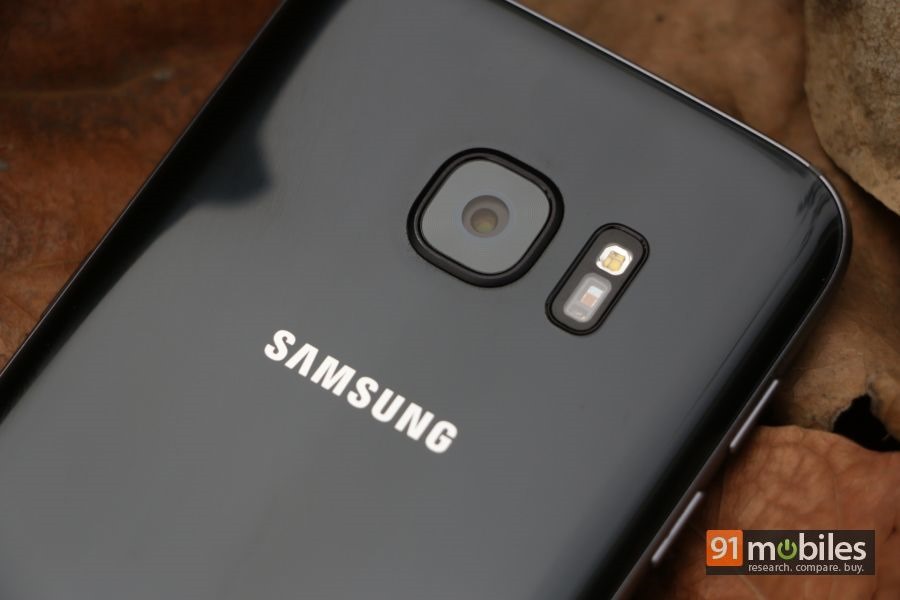
“We compare four of the hottest android smartphones out in the market right now to see who comes out on top”
It is nearing the end of the year and the battle for smartphone supremacy is reaching its peak. In an arena filled with fiery competition (sorry, Note7), it’s difficult to decide which smartphone is the best of the best. Let’s take a quick look at four of the hottest android smartphones in the market right now, including the newly-launched Moto Z (first impressions), and how they fare against each other. 
Table of Contents
Design
Starting with the latest offering in the market, the Moto Z, is a mere 5.7mm thick, making it the slimmest of the lot. Its svelte body comprises an aluminium frame and a steel back to give you a phone that shouts premium, and looks stylish as well. The flip-side of that slim girth is the protruding camera and the missing headphone socket, which has been replaced by a USB Type-C port. The device is equipped with a water repellent nano-coating for protection against splashes.
However, the nano-coating is no match for the water proofing and dust protection offered by the IP68-certified Samsung Galaxy S7 (review), which can remain in water of up to 1.5m depth for 30 minutes. Design-wise, the Samsung Galaxy S7 broadly retains the design of the Galaxy S6, with some refinements, such as smoother edges and more nuanced curves at the back. The metallic frame running along the edges of the Samsung Galaxy S7 gives it a robust build along with a graceful look. Flip over the Galaxy S7, and you’ll be greeted with a shiny rear, made out of glass. Just like its previous iteration, the glass offers a reflective surface, though it still remains a fingerprint magnet.
While most phone makers follow a uniform design language for their devices, LG has been constantly changing and improving the aesthetics of its flagship ‘G’ series. Like its predecessors, the all-metal G5 (review) offers rounded corners and sports a narrow bezel around its display panel with an impressive screen-to-body ratio of 70 percent. But most importantly, it now has a modular design. 
As for the flagship offering by the Taiwanese manufacturer HTC, the HTC 10 (review) is a full-metal phone with a curved rear which flattens out on the sides due to the presence of a wide, chamfered band, that gives it a unique look. The machined, industrial looking design also adds to the grip, and overall, we think that the HTC 10 is possibly the most well-made and stylish Android flagship currently available.
Display
All the smartphones offer high-resolution quad-HD displays which make them the prime choices for media consumption. The colours are vivid and moreover the high gamuts allow for better colour reproduction. The Moto Z offers the largest screen size with its Super AMOLED display measuring 5.5-inches (534 ppi) whereas the Samsung Galaxy S7 is the sharpest with 576 ppi on its 5.1-inch Super AMOLED panel. As for the remaining options, both have opted for LCD panels with the 5.2-inch HTC 10 providing a sharp 565ppi pixel density on its Super LCD 5 screen and the LG G5 opting for a 5.3-inch IPS LCD screen (554 ppi).
Performance, Storage and Battery
A flagship title warrants speed and none of the smartphones in this battle come with their guns unloaded. Except for the Samsung Galaxy S7, which offers the octa-core Exynos 8890 SoC in its Indian variant, all the smartphones come with the blazing fast quad-core Qualcomm Snapdragon 820 processor. 4GB of RAM makes multi-tasking a breeze and since the devices also offer 32GB of on-board storage with support for expandable storage via microSD cards, you wouldn’t really have to worry about running out of space. 
But all the power and memory in the world would not do consumers any good unless they are backed by an equally good power source. The HTC 10 and Samsung Galaxy S7 give users 3,000mAh capacities each, which would make them a better choice over the Moto Z and the LG G5, which offer just 2,600mAh and 2,800mAh batteries respectively. Interestingly, the semi-modular LG G5 is the only device on this list which lets you swap batteries just like the good old times.
Cameras
If there is one thing that generally sets the premium flagships apart from the likes of the growing number of powerful yet affordable Chinese devices, it has to be the camera quality. Over the years, these manufacturers have managed to deliver phones that shoot great photos, thanks to the combination of good hardware and image processing.
The Samsung Galaxy S7 packs DSLR-grade technology in its neat package. Dubbed Dual Pixel tech, the 12MP camera sensor can utilise all the photodiodes located on the left and right of the pixel for converting the light particle into the measurable photocurrent, unlike most devices, which can only use 5 percent for this purpose. This ensures that the phone can lock focus in a better manner, even in low-light situations. It also sports a 5MP front-facing camera, just like the Moto Z and HTC 10.
The Moto Z has a 13MP primary shooter which boasts an aperture of f/1.8, and comes loaded with laser autofocus and optical image stabilisation to keep the shutterbugs satiated. The HTC 10 achieved a spectacular 88/100 on the DxOmark benchmark with its 12MP primary camera, while the LG G5 went for a different approach altogether by incorporating two – 16MP and 8MP camera sensors on the rear and another 8MP sensor as the secondary shooter. But unlike many other implementations of dual sensors, the G5 gives you the ability to get the wide-angle view of 135 degrees with a single click. The phone also brings forth useful features such as laser autofocus, LED flash, and optical image stabilisation. Needless to say, it is a close call between these smartphones when it comes to their camera prowess.
Software and Connectivity
While all the devices ship with Android 6.0 Marshmallow out of the box, they differ in terms of the features offered by their overlaying user interface. The Moto Z opts for a vanilla android experience which is simple yet hides some novel tricks under its hood. Android Marshmallow is what you’ll find on the phone, and the completely stock platform takes help from the signature Moto features that we’ve come to know and love over the years. Features like the double karate chop to toggle the flashlight, double twist of the wrist to launch the camera, voice control, and reaching your hand out towards the phone to wake up the display are all there. Moto has also thrown in some new ones, like an upward swipe from the bottom of the display to activate a one-handed mode.
HTC’s new Sense UI 8.0 has been developed by working closely with Google to ‘reboot the Android experience’ and has cut down drastically on bloatware and app duplication. This means that standard apps like the image gallery, calendar, and music aren’t to be found, and the device depends on Google for those.The overall look is minimalistic too, and very clean. Apart from the usual home screens and a vertically-scrolling app drawer, you get the Blinkfeed pane occupying a place of pride on the side of the home screens.
Unlike most Android skins, LG’s UI is known to only add a coat of visual changes in terms of icons along with some useful additions on top of Android. While earlier, LG’s devices offered a dedicated app drawer, on the G5 – the homescreen doubles up as an app launcher too. Samsung’s minimalistic ideology continues in the software section as well, as its TouchWiz user interface isn’t loaded with bloatware and is quite simple, gelling well with Google’s Material Design aesthetics.
All the aforementioned smartphones offer basic connectivity options such as Wi-Fi, Bluetooth, NFC and GPS and sensors like fingerprint scanners, gyroscope, proximity, and light sensors. The Galaxy S7 also has a heart-rate monitor which works in conjunction with pre-installed S Health app and is a good way of tracking one’s fitness. The LG G5 and Galaxy S7 also let users use two SIMs via their hybrid SIM slots which double up as microSD card readers.
Oomph Factor
While the basic specifications have been laid down and compared, lets talk about the special aspects of these devices that might sway your interest towards one of them. While the semi-modular LG G5 started the trend of detachable units offering features such as additional battery life and camera grip to name a few, the Moto Z appears to have perfected it. The Moto Mods come in the form of four accessories for now – the Incipio offGRID Power Pack, the JBL SoundBoost speaker, the Moto Insta-Share projector and lastly, the Hasselblad True Zoom camera add on. Attaching a Mod to the Moto Z is easy – align the rear camera, bring the Mod and the phone together, and snap, the two are connected. There’s nothing to configure, no settings to be done – the Moto Mods are hot swappable and ready to rock as soon as they’re attached. Although these mods are surely a bit pricey, it is nice to know that they would be compatible with future devices in the Moto Z range as well. The Samsung Galaxy S7’s camera quality and waterproofing makes it a more desirable option than the other smartphones while HTC 10’s design and software is one to die for.
Pricing and Conclusion
 Opt for the Moto Z incase you prefer stock android and the prospect of staying loyal to the Moto Z family so as to utilise the Moto Mods that you might purchase does not raise any apprehensions. Both the HTC 10 and Samsung Galaxy S7 are capable shooters and one cannot go wrong with their money on either of them. However, we do feel that HTC has a more polished design and software whereas Samsung offers bang for the buck with additional sensors and water proofing. Lastly, the LG G5 is an exciting choice for users who want to try out the future of smartphones i.e. modularity and want to relive the experience / convenience of swapping removable batteries.
Opt for the Moto Z incase you prefer stock android and the prospect of staying loyal to the Moto Z family so as to utilise the Moto Mods that you might purchase does not raise any apprehensions. Both the HTC 10 and Samsung Galaxy S7 are capable shooters and one cannot go wrong with their money on either of them. However, we do feel that HTC has a more polished design and software whereas Samsung offers bang for the buck with additional sensors and water proofing. Lastly, the LG G5 is an exciting choice for users who want to try out the future of smartphones i.e. modularity and want to relive the experience / convenience of swapping removable batteries.






























